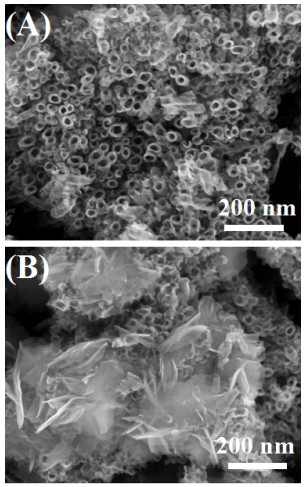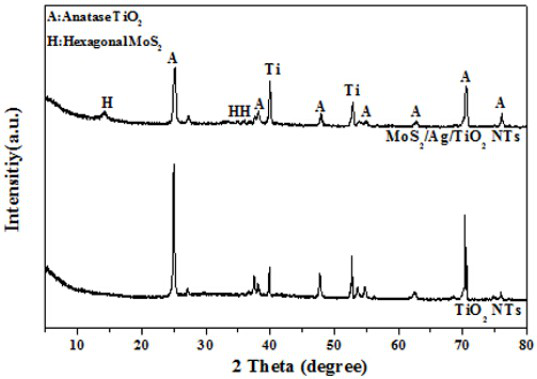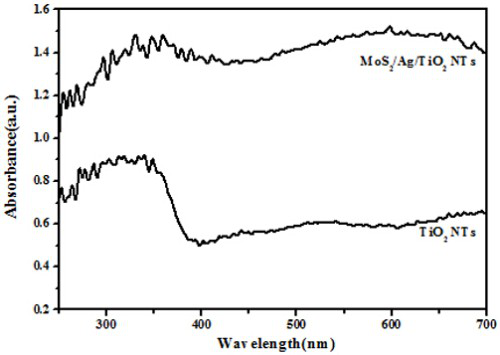nanocomposite mos 2 /ag/tio 2 nts preparation method
A technology of nanocomposite materials and reduction method, which is applied in the direction of catalyst activation/preparation, nanotechnology, nanotechnology, etc., which can solve the problems of limiting the formation of photocatalytic reaction devices, low catalytic oxidation activity, unfavorable absorption and reflection, etc., to reduce Recombination probability, improved photocatalytic efficiency, and high reuse rate
- Summary
- Abstract
- Description
- Claims
- Application Information
AI Technical Summary
Problems solved by technology
Method used
Image
Examples
Embodiment 1
[0020] The nanocomposite material MoS of this embodiment 2 / Ag / TiO 2The preparation method of NTs is as follows:
[0021] (1) Titanium mesh pretreatment: ultrasonically clean the titanium mesh with acetone, ethanol, and deionized water in turn for later use; (2) Preparation of organic electrolyte: 40 mL of dimethyl sulfoxide solution containing 2wt% hydrofluoric acid; ( 3) Anodization of titanium mesh: under 40 V DC voltage, with platinum sheet (L×W=3×1 cm) as cathode and titanium mesh (L×W=3×2 cm) as anode, in the electrolyte Preparation of titanium oxide nanotubes by electrolysis for 8 hours; (4) Crystallization of titanium oxide nanotubes: calcining the titanium oxide nanotubes prepared in the above steps under aerobic conditions at 450~550°C for 2~4 hours to crystallize them into TiO 2 NTs. (5) Ag / TiO 2 Preparation of NTs mesh: the TiO 2 NTs / Ti mesh (effective area 2cm×2cm) was immersed in 0.06mol / L AgNO 3 solution, 40kHz ultrasonic treatment for 30 minutes, then rin...
PUM
 Login to View More
Login to View More Abstract
Description
Claims
Application Information
 Login to View More
Login to View More - R&D Engineer
- R&D Manager
- IP Professional
- Industry Leading Data Capabilities
- Powerful AI technology
- Patent DNA Extraction
Browse by: Latest US Patents, China's latest patents, Technical Efficacy Thesaurus, Application Domain, Technology Topic, Popular Technical Reports.
© 2024 PatSnap. All rights reserved.Legal|Privacy policy|Modern Slavery Act Transparency Statement|Sitemap|About US| Contact US: help@patsnap.com










